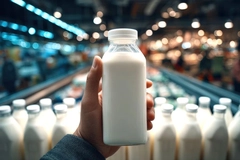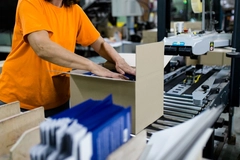Pet food packaging: Paperization and pouches proliferate amid humanization trend

The pet food packaging sector is experiencing steady growth driven by rising demand for single-serve formats, environmental sustainability, and regional production. Meanwhile, the proliferating “humanization of pets” trend also influences consumer choices, pushing demand for attractive packaging providing comprehensive information on nutritional outcomes.
While flexible pouches and plastic packaging dominate globally, evolving consumer preferences and regulations — especially in Europe — are accelerating a shift toward paper-based and monomaterial solutions, according to industry experts at Clevertech and Innova Market Insights.
Innova Market Insights data indicates a 21% increase in global pet food launches from 2020 to 2024. While consumers prefer paper packaging for pet food, product launches indicate that plastic remains the dominant material in NPD.
We speak to the two companies to find out more about how the industry juggles regulatory requirements and consumer preferences for customized and aesthetic packaging.
Clevertech currently identifies pouches as the most popular pet food packaging. Pouches are a flexible monodose multilayer solution that usually contains wet pet food.
“This particular packaging is made with inseparable layers of different materials (also recycled ones) and contains the least amount of packaging compared to jars, cans, or cartons,” Luca Carollo, manager business development and marketing communication leader at Clevertech, tells Packaging Insights.
Shoppers pay attention to nutrition indications on packaging when buying pet food.“We are experiencing an increase in handling smaller (until 50 g), single-serve packages such as flexible pouches, or 3 oz (85 g) cans in the European market. In the US market, rigid packages like cans, cases, or split cups remain most popular.”
“Clevertech identifies both pouches and cans to be popular in the Asian market, with demand for smaller sizes compared to the EU or US.”
Innova Market Insights’ data also suggests that single-serve packaging is Asia’s leading packaging format for cat food.
Monomaterial and paper
Clevertech observes several changes in pouch materials influenced by the European Packaging and Packaging Waste Regulation (PPWR), leading to recyclable, monomaterial packaging choices.
“As we see this shift in pet food packages, we, as a main project coordinator and product handling contractor in the pet food line, need to face the challenge of achieving higher speeds, reducing systems footprint, and increasing the machine efficiency,” says Carollo.
“Since we have to handle flexible material at high speeds, the reduced footprint utilization of a vision system in combination with the delta robot is the way to satisfy the latest market demands.”
Recently, Sonoco joined forces with German pet snack start-up DoggyLove for plant-based cans. Sonoco’s GreenCan, featuring a 92–98% paper content solution, is said to offer increased recyclability, short delivery times, strong sustainability credentials, and full-surface printing capabilities.
Innova Market Insights confirms this paperization trend, stating that 39% of global consumers prefer “Paper bags or cartons” over material alternatives, followed by “Plastic bags” (31%) and “Plastic pouches” (24%).
Meanwhile, global packaging company UFlex is developing a manufacturing facility in Mexico focused on producing woven PP (WPP) bags for the pet food sector. The initiative is said to be a response to growing product demand across North and South America and reflects a broader industry shift toward regional production and supply chain efficiency.
UFlex says the WPP bags manufactured at the site will be fully recyclable and designed to meet evolving regulatory and consumer expectations around packaging waste and environmental impact.
Pet humanization Clevertech observes an increase in demand for customized, colorful, and fancy packages.
Clevertech observes an increase in demand for customized, colorful, and fancy packages.
Clevertech has been following the “humanization of pets” for several years. “We offer more and more customized, colorful, and fancy packages, with detailed nutrition indications,” says Carollo.
“Additionally, consumers demand adding refined ingredients such as Alaska or Chile salmon. The trend for vegan pet food is also noticeable: all these new products are clearly aligned with human food trends. The humanization of pet food is just at the beginning of its journey.”
Innova Market Insights data supports this trend, highlighting “Ingredients lists” as the packaging element consumers pay the most attention to globally (41%), followed by “Nutrition facts/calories” (33%) and “Animal welfare” (23%).
Customization and multi-flavor
Clevertech’s R&D team plans to further increase the speed and efficiency of its pet packaging operations — key elements for staying ahead in the fast-paced FMCG environment.
“In addition, Clevertech will develop tailor-made solutions based on customer product needs to ensure and achieve a smooth and continuous production flow,” says Carollo.
“Several projects delivered by Clevertech in the pet food market are developed for multi-flavor packages, which include the handling of primary packages offline, temporary storage in plastic creates or trays, and afterward return to the line for mixing and packaging.”
“R&D is playing a crucial role to minimize capex and maximize flexibility to supply single- and multi-flavor packages.”











